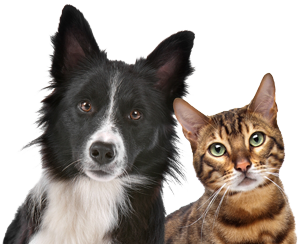 September is National Pet Insurance Month. Many of us have homeowner’s insurance, renter’s insurance, car insurance, and health insurance. But what about our pets? Could adding pet insurance for your furry friends be a worthwhile expense?
September is National Pet Insurance Month. Many of us have homeowner’s insurance, renter’s insurance, car insurance, and health insurance. But what about our pets? Could adding pet insurance for your furry friends be a worthwhile expense?
Pets are a popular part of the American family, with 67% of households owning at least one. The number of families who own pets, despite the potential economic hardship, is on the rise. In 1988, only 56% of households included a pet. Dogs, cats, aquarium fish, birds, reptiles, and other animals are now seen as valuable and integral family members who serve as companions, helpers, entertainers, and even protectors of the home.
With approximately 85 million households in the United States owning a pet, caring for these nonhuman family members has become a $99 billion a year industry, more than doubling since 2010. This statistic not only attests to their popularity, but also to the level of financial sacrifice many pet owners make to keep their pets healthy and happy.
The cost of veterinary care alone is expected to reach $30.2 billion this year. As veterinary care continues to incorporate many of the advanced diagnostic and surgical techniques that are commonplace in human healthcare, the cost of veterinary care will likely continue to rise. And with many pet owners facing economic strains due to the pandemic, a sudden pet health emergency, even if not grave, could have them facing the possibility of “economic euthanasia,” having to put their pets down because they lack the funds to cover sudden veterinary expenses.
What is pet insurance?
An increasingly popular option to prevent this type of situation is a pet insurance policy. Unlike human health insurance, which usually pays out directly to the medical provider, pet insurance works on a reimbursement basis. You must first pay the veterinarian for the procedure needed and then request reimbursement from the pet insurance company. The reinstatement amount is rarely 100% of the cost, although some of the more complete plans cover up to 90 percent of vet costs. The reimbursement process is usually simple, requiring only the vet’s invoice (and sometimes some treatment records) along with a completed claim form.
Like other types of insurance, pet insurance is essentially a package of many different types of coverage. Some packages cover only the bare essentials, while others are more comprehensive and include preventive care and rehabilitation. Dental coverage for pets is rare, but a few carriers are now offering it as an option in their pricier policies. However, nearly all pet insurance policies exclude preexisting conditions and specific conditions such as hip dysplasia. They also can include payout caps on particular procedures, on the yearly payout, or even on the total the policy will pay. Most pet insurers will reimburse you for care rendered by any licensed American vet, but some limit policyholders to certain veterinary clinics and networks.
All pet insurance plans have a deductible of one type or another. Most insurers give their customers a choice of deductibles; policies with lower deductibles cost more. Being able to adjust the deductible allows customers to pick a policy with a monthly payment that fits their budget.
Why consider it?
The cost of veterinary care is increasing due to improvements in technology and higher costs in training, equipment, and facilities. We all hope that our pets will never have an emergency, but the current estimate is that 1 out of every 3 pets will need emergency care every year. If your pet is that 1 pet who requires care, pet insurance can help defray those costs. This could be the difference between getting your pet help and being forced into a decision about “economic euthanasia.” If you have pet insurance and are not worried about a large expense, it may allow you to consider more treatment or diagnostic options. Pet insurance can also help cover the cost of boarding or pet sitting if you are hospitalized, a definite bonus during this pandemic. For more information and some examples of whether pet insurance could be worth it for your fury family member, check out this information from Washington Consumer’s Checkbook.
How to compare policies
There are a wide array of pet insurance policies available to pet parents these days. Here are a few things to keep in mind when you are comparing companies to find the best fit for you and your pet:
- Does the policy provide comprehensive coverage or accident-only coverage? Some companies will allow policy holders to add on wellness and routine care (things like spay/neuter, dental cleanings, vaccines, and flea/tick treatments) and a very few provide that coverage normally. Remember that most policies do not cover hereditary diseases or pre-existing conditions and often have a maximum age limit.
- What is the total cost? You should compare the monthly price, options for premiums and deductibles, and potential limits on payments/payouts. The average monthly price of pet insurance is $47 for dogs and $29.50 for cats. Keep in mind that you always have to pay the veterinarian out of pocket and then you can be reimbursed.
- What is in the fine print?
- Does your policy require you to go to a specific in-network veterinarian or can you visit anyone?
- Check for any exclusions involving species, breeds, or conditions that are not covered.
- What is the waiting period for claims reimbursements and what is the reimbursement rate? Many companies will provide up to 90% reimbursement for claims.
- Is there a payout cap and if so what is it? Is it an annual cap, a per-incident cap, or a lifetime cap?
- Is the deductible a per-incident or annual rate? Per-year deductibles provide a better value for most pet owners.
Where can you get it?
There are many companies out there that provide pet insurance. You may even be able to combine it with your home or auto insurance from places like Progressive or Nationwide. If you are more interested in companies that specialize in pet insurance, this list can help you get started:
- Healthy Paws – Ranked #1 for customer satisfaction, no maximum payouts, and fast claims processing, does not raise rates as pets age
- Embrace – Includes dental care and allows for shrinking deductibles
- PetPlan – Can begin plan as early as 6 weeks of age, covers up to 90% of some claims
- Trupanion – Offers one policy regardless of species, covers some hereditary diseases, and has no set limits, does not raise rates as pets age
- ASPCA – Provides a discount for multiple pets and does not require in-network vet visits
- PetFirst – Includes preventative care as well as accidents and emergencies
- Pets Best – Good for elderly pets because does not have an age limit
- FIGO – A newer company with easy online access and up to 100% coverage
- Prudent Pet – Covers preventative and wellness care with low deductibles
- Trusted Pals – Adjustable co-pays and deductibles without requiring in-network visits
Here is another comparison of various pet insurance companies.
Are there other options?
As an alternative to pet insurance, some veterinary clinics, like VCA and Banfield, are providing “care plans” to help owners defray some of the unexpected costs of veterinary care. Many of these care plans provide differing levels based on the age and type of animal, but most include annual exams, vaccinations, lab work or diagnostic testing, and non-emergency office visits.
While more and more pet owners today are looking into pet insurance, it comes down to your personal opinion. Can you afford pet insurance now? Will it likely save you money in the future? And will it provide you the peace of mind knowing that you have help if something drastic or expensive happens to your pet?
Contributing Author:
José A. Sánchez Fournier is a writer with ConsumersAdvocate.org. Previously, he spent 15 years as a journalist with El Nuevo Día, the largest daily newspaper in Puerto Rico.

 The month of August is also known as “Rawgust” for both people and pets. Have you wondered if all the hype about raw food for your four legged friend is real? Have you considered switching from commercial kibble to raw food for your pet? The practice of raw feeding is still highly debated in veterinary, behavioral, and nutritional circles. There are many anecdotes about how well a pet has done with a raw diet and there are just as many veterinarians who do not recommend it.
The month of August is also known as “Rawgust” for both people and pets. Have you wondered if all the hype about raw food for your four legged friend is real? Have you considered switching from commercial kibble to raw food for your pet? The practice of raw feeding is still highly debated in veterinary, behavioral, and nutritional circles. There are many anecdotes about how well a pet has done with a raw diet and there are just as many veterinarians who do not recommend it.